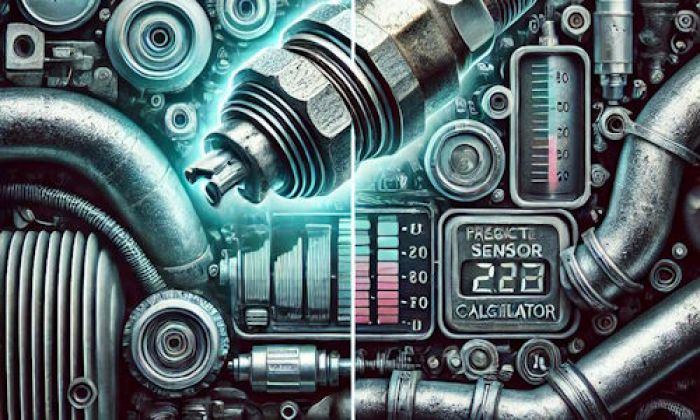A car relay is an electrical switch that connects two electric circuits. It allows current to flow by switching between the circuits. An automotive relay uses an electromagnet component to operate the switch - breaking or joining the circuits mechanically. You will find relays in all automotive machines - cars, boats, trucks, and heavy-duty rigs. Cars use a small cubic relay.
Relay problems highlights
- Level of urgency:medium
- DIY inspection:possible but complicated
- DIY repairs:possible
- Can you drive?depending on the relay in question
- Price of repairs:$30 - $250
- Ifignored:certain functionswon'twork
- Ways to fix:checking the relay is difficult,professional help may be needed

How to Remove a Relay from the Fuse Box
The following is a step-by-step guide to removing a relay from the fuse box. You can follow these steps when swapping or replacing a relay.
- The first step is to locate the relay you want to remove in the fuse box. You will find your relays under the hood in the engine bay. They are usually in a black or grey fuse box near the battery.
- Next, disconnect the battery terminals to prevent accidental sparks. You do not want to create fire while working in your fuse box.
- Now it is time to remove the relay. Some relays are screwed in. So, you may want to identify and be sure there are no screws in place. You can hold the relay with two fingers and pull it out to remove it. You can also use a plier to pull the relay out because it will make the work easier.
How Can You Tell If You Have a Bad Relay?
If you have malfunctioning electronics and suspect a relay to be the cause, run a few tests to confirm your suspicion. As mentioned earlier, you will find your relays inside a fuse box under the bonnet of your vehicle, near the battery.
Try the following tests to identify a faulty relay.
1) The Clicking Sound Test
Using your horn, identify a relay that does not produce a clicking sound when you press the button. Get someone to press the horn button as you place your finger on the relays. Listen keenly, and feel for any clicking sound as your helper presses the horn button.
If you feel or hear clicking sounds, the relay works correctly. The clicking sound comes from the side of the relay with the energizing coil and circuit.
You may have a problematic relay if the horn does not produce any sound. If the relay is not receiving any power on the side of the energizing circuit, your horn will not make any sound, and all other electronics relying on that particular relay will malfunction.
You could be having a bad horn switch or faulty grounding connection.
If you did not hear or feel a clicking sound as your friend pressed the horn, the energizing side of your relay is faulty. The relay's energizing circuit may not receive enough power, or the relay could have broken internal components. It could also be due to a broken connection that the relay or the horn is not producing sound.
2) Swapping Relay Test
After identifying the relay that does not have a clicking sound when you press the horn button, you can root it out by swapping it with a relay that works. You must use an identical relay. Check the number on the relays to ensure they match before switching them.
You can confirm whether your swap is working correctly by checking its circuit. If it is a headlight relay, ensure the lights are working correctly before using it for the test. If your horn works after the swap, you can now be sure you have a faulty relay.
Replacing the Faulty Relay
Now that you are sure of the cause of your problem, you can replace the bad relay with a brand-new one. It is essential to ensure that your relay replacement is identical to the old one. Check the numbers on each of them and ensure they match.
Ensure you put the new relay in the correct prong orientation. After aligning the prongs, push the relay down with your finger until it is securely in place. The next step is reconnecting the battery and ensuring you put all the screws back in place.
You can now test the electronics attached to the new relay. If it is the starter motor, try starting the engine.
When Do You Need to Replace a Relay?
Your vehicle relies on relays to function correctly. It has several relays that work together to ensure nothing goes wrong as you drive. When a relay fails, another one falls, and the effect continues until you fix the problem. Among the most critical relays in your vehicle is the electronic relay. This one controls all the electronics in your car.
Some people call it the main relay. Although it may be to emphasize its importance, the electronic relay controls the most critical parts of your car. The fuel injectors, fuel pump, and other essential elements of your vehicle rely on the electronic relay. This means that, among other relays, your car may not move an inch if the electronic relay fails.
When asking this question, "When do you need to remove a relay?" we are looking at all relays, not just the electronic or the starter relay.
Over time, the relays in your fuse box could suffer damage due to dirt and dust. Heat is also a contributing factor to relays breaking down before time. It is difficult to allocate an exact duration of when to remove a relay and replace it with a new one. This is because they often fail because of the time factor - wear and tear.
However, the important point is removing a relay when you suspect it is faulty. A professional mechanic can help determine whether a relay is dead or just walking on its last leg. Either way, these two means you replace it immediately.
To this point, we will look at some sure signs of a failing relay. We will use the electronic relay as an example.
- If you try igniting your vehicle but do not hear any sound from the fuel pump, the electronic relay is down and requires a replacement.
- You will experience intermittent problems starting your engine.
- If the electronic relay fails, your engine will not start in cold weather.
- These are just symptoms; you can only be sure if you visit a professional mechanic for assistance.
The relays in your fuse box are very critical to the functioning of your vehicle. Ensure that they are working correctly all the time.
Avoid These Mistakes When Replacing a Relay in the Fuse Box
- Avoid replacing a faulty relay with one that does not match the specs of the original. Even if the relay prongs fit, but the serial numbers do not, the new relay could cause more problems for your vehicle.
- Do not install a new relay before testing the old one. This will help you determine whether the problem is with the relay or another part of your vehicle.
- Avoid misconnecting the battery terminals. If you reconnect the battery terminals wrongly, you could create sparks that lead to a fire.
- If you unscrewed any screws when removing the relay, ensure you tighten them back when finishing the replacement.
- When putting the new relay in its place, avoid putting too much pressure on it. You could crush it, thinking that you are securing it.
Conclusion
The relays in your fuse box are critical to the functioning of your vehicle. They must be in good working condition for your car to start, the engine to run, and the electronics and headlights to work.
A control relay can fail for many reasons, including wear and tear, dirt, dust, and debris. If you experience a problem that makes you suspect a relay, follow the above points to test and replace it if necessary.
About the authors
The CarAraC research team is composed of seasoned auto mechanics and automotive industry professionals, including individuals with advanced degrees and certifications in their field. Our team members boast prestigious credentials, reflecting their extensive knowledge and skills. These qualifications include: IMI: Institute of the Motor Industry, ASE-Certified Master Automobile Technicians; Coventry University, Graduate of MA in Automotive Journalism; Politecnico di Torino, Italy, MS Automotive Engineering; Ss. Cyril and Methodius University in Skopje, Mechanical University in Skopje; TOC Automotive College; DHA Suffa University, Department of Mechanical Engineering






Add comment